
Robert Witcher
Associate Professor of Archaeology
Editor - Antiquity
Address: Department of Archaeology
Durham University
South Road
Durham
DH1 3LE
Editor - Antiquity
Address: Department of Archaeology
Durham University
South Road
Durham
DH1 3LE
less
Related Authors
Bill Templer
Shumen University
Sokol Lleshi
University of New York in Tirana
Ilir Kalemaj
University of New York in Tirana
Homero Gil de Zúñiga
Pennsylvania State University
Brett Evans
Connecticut College
Emina Kristina Petrovic
Victoria University of Wellington
Ilaria Bortolotti
Università degli Studi "La Sapienza" di Roma
Elizaveta Berezina
Sunway University
Mahmut Cihat İzgi
Sakarya University
InterestsView All (22)
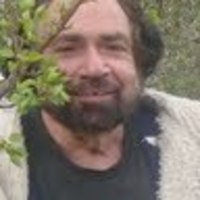
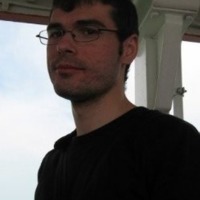

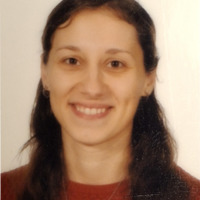

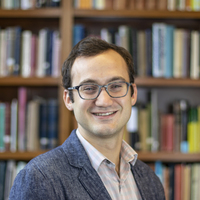

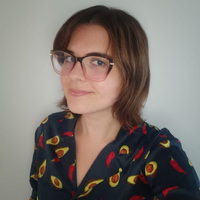

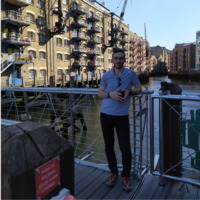
Uploads
Papers by Robert Witcher
This chapter explores the different factors influencing research in the lower and upper/middle Tiber as a first step towards the reintegration of both sections and the re-analysis of the role of Rome within this system. Next, a new model of mobility is described and developed by considering multi-modal mobility across the Tiber valley between locations in the lower valley (i.e. Rome and Portus) and the middle valley (i.e. Lucus Feroniae and Castellum Amerinum). In doing so, the chapter aims to examine the role of Rome as a transhipment port and to explore the relationship between road and river transport across the Tiber valley. As a result, this study will highlight the complexity of this transport system and the multiple possibilities it offered for addressing the supply needs of Rome and the towns in the Tiber valley.
This article presents the background to and prospects for a new initiative in archaeological field survey and database integration. The Roman Hinterland Project combines data from the Tiber Valley Project, Roman Suburbium Project, and the Pontine Region Project into a single database, which the authors believe to be one of the most complete repositories of data for the hinterland of a major ancient metropolis, covering nearly 2000 years of history. The logic of combining these databases in the context of studying the Roman landscape is explained and illustrated with analyses that show their capacity to contribute to major debates in Roman economy, demography, and the longue durée of the human condition in a globalizing world.
Throughout the late medieval and early modern periods, writers sought to explain the presence of a mountain of pottery sherds—a mons manufactus—on the bank of the River Tiber at Rome. One enduring interpretation can be traced back at least as far as Giovanni Cavallini’s Polistoria of the mid fourteenth century: these ceramic sherds were the remains of vessels used to bring to the ancient city tribute from Rome’s provinces and client kingdoms. The hill therefore was a material manifestation of the city’s imperial power, a monument to the emperors’ ability to concentrate the wealth of the world at its centre. After almost 150 years of archaeological investigations, starting with Heinrich Dressel’s excavations in the 1870s, we now know that Monte Testaccio is formed from millions of smashed amphorae filled originally, not with gold from Persia, but with green gold from Hispania: olive oil to feed and fuel the city’s million-strong population. This ‘unique archive’, as José Remesal describes it, documenting the supply of a staple agricultural product to the city of Rome, is an appropriate place to begin this edited collection on the productive landscapes and trade networks of the Roman Empire. For more than simply waste packaging, these amphorae at the end of their life-histories have rich stories to tell about distant landscapes, about rural production and urban consumption, and about the complex technological, social and political organization needed to transport them thousands of kilometres across the Mediterranean. From Monte Testaccio, the other papers of this volume then spread out to consider case studies as far removed as coast of south-western Spain and the Dobrogea in eastern Romania, and from Hadrian’s Wall in Britain back to the heart of empire in the hinterlands of Rome and Pompeii. This epilogue draws out some of the key themes that emerge from these contributions and identifies some challenges and avenues for future research.
The article by Kuzmin (2019) that opens this section focuses on radiocarbon dating and the reliability of different sampling and preparation procedures. Arguably, however, the debate that he starts reflects a wider challenge within the discipline—and no doubt in other disciplines too. Archaeology has always drawn upon a range of varied skills and methods to achieve its goals. For many of us, it is precisely this expansive and eclectic practice that draws us to the subject. As the discipline has evolved, specialisms have necessarily emerged, and the importance of interdisciplinary work has grown. These developments have facilitated hugely significant advances in understanding, through innovations in scientific methods as well as theories, philosophies and interpretative frameworks. But, as these specialisms emerge and the pace of innovation increases, so our interdependence grows and a communication gap between practitioners may develop. Potential misunderstandings and even ideological dispute may then follow.
How were the rural populations of Italy integrated into the changing economic structures of the Roman period? To what extent did cities and urban populations drive change? When, where, and by whom was investment made in infrastructure? What was the impact of economic development on rural communities? Such questions about the Roman past have also been asked about other historical periods. For example, evaluating the impact of expanding capitalist economies on the integration of the agrarian empires and peasant populations of the 18th century AD, historians have come to contrasting conclusions. One group has drawn attention to the evolution of a 'dual economy', whereby urban populations pulled away socially and economically from rural populations, leaving the latter isolated and stubbornly poor. Conversely, exponents of World Systems Theory have argued that it was precisely the integration of these rural communities into the industrialising economy that created their economic dependency and underdevelopment. The significance of this example is that, in trying to answer very similar questions about rural integration, historians of more recent periods with access to more and better quality data, have failed to find agreement. From the outset, this is a useful reminder of the scale of the challenge involved in the study of Roman rural integration.
Today, archaeobotany and zooarchaeology are the primary means of documenting the flora and fauna of Roman Britain. Yet the discipline of archaeology came late to this topic. This paper outlines the evolving sources of evidence used over the past 400 years to identify those species introduced during the Roman period. This includes consideration of the reception of classical texts, linguistic etymology and genetic analysis. An overarching narrative behind these concepts is the colonial theoretical framework of ‘Romanisation’, or the genealogical appropriation of the Romans as ‘our’ cultural and biological ancestors.
Despite interest in the reception of Rome and its archaeological remains, scholars have been slow to recognise the centrality of flora and fauna for understanding historical and contemporary perceptions of the Roman past. This paper opens a new avenue of research by calling attention to the intellectual biography of the dominant interpretive frameworks which structure both scientific approaches to the collection and interpretation of data and popular attitudes towards landscape and identity.
We suggest our preliminary model raises questions for further consideration. The assumed existence of Mid Republican ‘proto-villas’ emphasizes the issue of agricultural productivity – in particular, the parity of Mid Republican and Early Imperial productivity, and the Late Republican productivity decline. Neither of these observations sits comfortably with the conventional narrative of Republican agriculture (in which under-developed Mid Republican agriculture is replaced by Late Republican capitalist ‘agro-business’), but nor have such issues been explicitly recognized within emerging revisionist narratives. Such trends may or may not lend support to these interpretations. Another question concerns how farms were able to access increasingly better land, whilst villas occupied poorer land. We argue that the emergence of tenancy is one way to explain these trends. In turn, this requires us to define a new socio-economic category – the tenant farm – and to model the implications. One effect is likely to be greater agricultural output and, therefore, higher productivity and larger supported population. In turn, this encourages us to reflect on the relationship between rural production and Early Imperial urbanization, particularly the intensification of monumental building by local landowners. Finally, we note that a crude productivity measure of one (‘rural’) food-producer supporting four other (‘urban’) persons is the reverse of the widely-cited figure of an urban population rate of 10-20%. Are our modelled estates too productive? Was there a large non-food producing rural population? Were urban populations higher?
This chapter explores the different factors influencing research in the lower and upper/middle Tiber as a first step towards the reintegration of both sections and the re-analysis of the role of Rome within this system. Next, a new model of mobility is described and developed by considering multi-modal mobility across the Tiber valley between locations in the lower valley (i.e. Rome and Portus) and the middle valley (i.e. Lucus Feroniae and Castellum Amerinum). In doing so, the chapter aims to examine the role of Rome as a transhipment port and to explore the relationship between road and river transport across the Tiber valley. As a result, this study will highlight the complexity of this transport system and the multiple possibilities it offered for addressing the supply needs of Rome and the towns in the Tiber valley.
This article presents the background to and prospects for a new initiative in archaeological field survey and database integration. The Roman Hinterland Project combines data from the Tiber Valley Project, Roman Suburbium Project, and the Pontine Region Project into a single database, which the authors believe to be one of the most complete repositories of data for the hinterland of a major ancient metropolis, covering nearly 2000 years of history. The logic of combining these databases in the context of studying the Roman landscape is explained and illustrated with analyses that show their capacity to contribute to major debates in Roman economy, demography, and the longue durée of the human condition in a globalizing world.
Throughout the late medieval and early modern periods, writers sought to explain the presence of a mountain of pottery sherds—a mons manufactus—on the bank of the River Tiber at Rome. One enduring interpretation can be traced back at least as far as Giovanni Cavallini’s Polistoria of the mid fourteenth century: these ceramic sherds were the remains of vessels used to bring to the ancient city tribute from Rome’s provinces and client kingdoms. The hill therefore was a material manifestation of the city’s imperial power, a monument to the emperors’ ability to concentrate the wealth of the world at its centre. After almost 150 years of archaeological investigations, starting with Heinrich Dressel’s excavations in the 1870s, we now know that Monte Testaccio is formed from millions of smashed amphorae filled originally, not with gold from Persia, but with green gold from Hispania: olive oil to feed and fuel the city’s million-strong population. This ‘unique archive’, as José Remesal describes it, documenting the supply of a staple agricultural product to the city of Rome, is an appropriate place to begin this edited collection on the productive landscapes and trade networks of the Roman Empire. For more than simply waste packaging, these amphorae at the end of their life-histories have rich stories to tell about distant landscapes, about rural production and urban consumption, and about the complex technological, social and political organization needed to transport them thousands of kilometres across the Mediterranean. From Monte Testaccio, the other papers of this volume then spread out to consider case studies as far removed as coast of south-western Spain and the Dobrogea in eastern Romania, and from Hadrian’s Wall in Britain back to the heart of empire in the hinterlands of Rome and Pompeii. This epilogue draws out some of the key themes that emerge from these contributions and identifies some challenges and avenues for future research.
The article by Kuzmin (2019) that opens this section focuses on radiocarbon dating and the reliability of different sampling and preparation procedures. Arguably, however, the debate that he starts reflects a wider challenge within the discipline—and no doubt in other disciplines too. Archaeology has always drawn upon a range of varied skills and methods to achieve its goals. For many of us, it is precisely this expansive and eclectic practice that draws us to the subject. As the discipline has evolved, specialisms have necessarily emerged, and the importance of interdisciplinary work has grown. These developments have facilitated hugely significant advances in understanding, through innovations in scientific methods as well as theories, philosophies and interpretative frameworks. But, as these specialisms emerge and the pace of innovation increases, so our interdependence grows and a communication gap between practitioners may develop. Potential misunderstandings and even ideological dispute may then follow.
How were the rural populations of Italy integrated into the changing economic structures of the Roman period? To what extent did cities and urban populations drive change? When, where, and by whom was investment made in infrastructure? What was the impact of economic development on rural communities? Such questions about the Roman past have also been asked about other historical periods. For example, evaluating the impact of expanding capitalist economies on the integration of the agrarian empires and peasant populations of the 18th century AD, historians have come to contrasting conclusions. One group has drawn attention to the evolution of a 'dual economy', whereby urban populations pulled away socially and economically from rural populations, leaving the latter isolated and stubbornly poor. Conversely, exponents of World Systems Theory have argued that it was precisely the integration of these rural communities into the industrialising economy that created their economic dependency and underdevelopment. The significance of this example is that, in trying to answer very similar questions about rural integration, historians of more recent periods with access to more and better quality data, have failed to find agreement. From the outset, this is a useful reminder of the scale of the challenge involved in the study of Roman rural integration.
Today, archaeobotany and zooarchaeology are the primary means of documenting the flora and fauna of Roman Britain. Yet the discipline of archaeology came late to this topic. This paper outlines the evolving sources of evidence used over the past 400 years to identify those species introduced during the Roman period. This includes consideration of the reception of classical texts, linguistic etymology and genetic analysis. An overarching narrative behind these concepts is the colonial theoretical framework of ‘Romanisation’, or the genealogical appropriation of the Romans as ‘our’ cultural and biological ancestors.
Despite interest in the reception of Rome and its archaeological remains, scholars have been slow to recognise the centrality of flora and fauna for understanding historical and contemporary perceptions of the Roman past. This paper opens a new avenue of research by calling attention to the intellectual biography of the dominant interpretive frameworks which structure both scientific approaches to the collection and interpretation of data and popular attitudes towards landscape and identity.
We suggest our preliminary model raises questions for further consideration. The assumed existence of Mid Republican ‘proto-villas’ emphasizes the issue of agricultural productivity – in particular, the parity of Mid Republican and Early Imperial productivity, and the Late Republican productivity decline. Neither of these observations sits comfortably with the conventional narrative of Republican agriculture (in which under-developed Mid Republican agriculture is replaced by Late Republican capitalist ‘agro-business’), but nor have such issues been explicitly recognized within emerging revisionist narratives. Such trends may or may not lend support to these interpretations. Another question concerns how farms were able to access increasingly better land, whilst villas occupied poorer land. We argue that the emergence of tenancy is one way to explain these trends. In turn, this requires us to define a new socio-economic category – the tenant farm – and to model the implications. One effect is likely to be greater agricultural output and, therefore, higher productivity and larger supported population. In turn, this encourages us to reflect on the relationship between rural production and Early Imperial urbanization, particularly the intensification of monumental building by local landowners. Finally, we note that a crude productivity measure of one (‘rural’) food-producer supporting four other (‘urban’) persons is the reverse of the widely-cited figure of an urban population rate of 10-20%. Are our modelled estates too productive? Was there a large non-food producing rural population? Were urban populations higher?
In 1969, in their only chart-topping hit, Zager and Evans wondered whether society's overdependence on technology and exploitation of the environment might lead to the extinction of humankind by the year 9595. Such is the speed of the so-called ‘Great Acceleration’ that has defined the half century since that song was written, some might now doubt whether humanity will survive another 700 years, let alone 7000. For these concerns are no longer the stuff of protest songs and science fiction. Speaking in July, UN secretary general António Guterres warned that climate change presents us with a choice, “Collective action or collective suicide”.Footnote1 A few weeks later, a group of scientists published an article arguing that the possibility of a “worldwide societal collapse or even eventual human extinction” as a result of catastrophic climate change is “a dangerously underexplored topic”.Footnote2 By coincidence, this summer also saw the passing of the pioneering scientist and originator of the ‘Gaia Hypothesis’, James Lovelock.Footnote3 Against the consensus, in the 1970s, Lovelock developed the idea of the Earth as a living and complex system capable of self-regulation to ensure suitability for all forms of life. Today, many of his ideas are core to how we understand climate and environment. Lovelock himself, however, became increasingly sceptical about the long-term prospects of human civilisation, envisaging a more vengeful Gaia, increasingly prepared to prioritise her own long-term survival over suitability for human life.Footnote4 Without doubt, all of the concerns have been reinforced over the year since the pivotal COP26 climate meeting in Glasgow at the end of 2021, which has illustrated the quickening pace of extreme- and record-breaking weather events and underlined the challenges we face in reducing greenhouse gases and restoring the environment to ensure a future for humanity.
https://doi.org/10.15184/aqy.2022.85
It is a truism that the archaeological record preserves only a fraction of the material culture that existed in the past. Most of it never enters the archaeological record and much that does decays; a host of other taphonomic and recovery biases then limit what archaeologists are finally able to document. Whether as a result of the recycling of materials, geomorphological processes or the limitations of time and money on excavation, the evidence with which we work is, at best, fragmentary. Consequently, archaeologists have become experts at tracing indirect lines of evidence or finding proxies, such as using symmetry to complete the plan of a building, predictive modelling to identify ‘missing’ sites, or isotope analysis of human tooth enamel to reconstruct diet for which we have no direct archaeobotanical or zooarchaeological evidence. Sometimes these gaps are frustrating—the absence of bone due to acidic soils or an archaeologically invisible funerary practice, for instance. At other times, these absences can be tantalising, such as genetic glimpses of hominin ‘ghost populations’, whose existence can be only indirectly and statistically inferred. Often these gaps are loaded with social and cultural significance, such as the invisibility of enslaved peoples. For all these reasons, archaeologists spend lots of time joining the dots, filling in the gaps or completing jigsaw puzzles. These metaphors, however, imply the reconstruction of something that is incomplete, a correction of the imperfect evidence to restore its integrity. Yet, sometimes a lack of evidence—that is, an absence—can be real and meaningful: one need only think, for example, of a cenotaph, defined precisely by its emptiness, or of the aniconism of some religious art.
Many of the most instantly recognisable world archaeology sites are places originally intended to bring together large groups of people. Whether to eat and drink, commune with one another or with the gods, or to work or be entertained, for millennia people have gathered at sites and monuments such as Gobekli Tepe, Stonehenge, the Colosseum, Cahokia, Angkor Wat and the Great Mosque at Samarra. Over the past two years, however, restrictions imposed in response to the COVID-19 pandemic have greatly limited the opportunities for people to assemble in physical places. Instead, many of us have gathered with friends, relatives and work colleagues in virtual spaces, leaving hotels, offices and sports stadiums eerily quiet. Of all the gatherings shifted online, from children's parties to parliamentary debates, perhaps the easiest to adapt has been the scholarly conference. Indeed, there are some obvious advantages over the traditional in-person format, from lower costs and fewer organisational logistics to larger and more diverse audiences. Two years of logging on to presentations at all hours, however, have also highlighted those opportunities and experiences of in-person conferences that are difficult to replicate online. Emoticons are no substitute for the energy, nuance, conviviality and serendipity of the real world. Consequently, with many, if not all, countries lifting restrictions and international travel reopening, the 2022 in-person archaeology conference calendar looks particularly full, including EAA (Budapest), WAC (Prague), PanAf (Zanzibar), SEAA (Daegu, South Korea) and IPPA (Chiang Mai, Thailand).
Patients attending Sigmund Freud's Vienna consulting room were confronted not only by their own pasts, but also by the ancient past. While seated on the psychoanalyst's couch, Freud's patients were surrounded by objects from his personal collection of antiquities: figurines, pottery, papyri, marble sculpture and painted plaster. Such was his fascination with these ancient objects that Freud's collection eventually grew to more than 2000 pieces, mainly of Egyptian, Greek and Roman provenance. Fittingly, although there is no evidence that he personally requested it, following his death in 1939, his ashes were interred in a fourth-century BC South Italian red-figure krater (Figure 1). Freud's interest in antiquity went beyond the aesthetic; famously, he used the practice of archaeology as a metaphor for psychoanalysis—a digging down through layers of memories to reveal insights into the patient's past.Footnote1 This characterisation of archaeology as a means of uncovering hidden truths does not align well with current scholarly understandings of the discipline. Perhaps, however, his compulsion to collect—a habit formed during a period of near-legendary archaeological work at sites such Knossos, Troy and the Valley of the Kings—might tell us something about the relationship between the human mind and the materiality of the past?
In 2015, the United Nations General Assembly agreed 17 ambitious Sustainable Development Goals (SDGs), specifying 2030 as the year by which they should be achieved. As we begin 2022-halfway to that deadline-how have archaeologists engaged with the SDGs to date and how might these activities develop in the future? The recent International Co-Sponsored Meeting on Culture, Heritage and Climate Change, jointly convened by UNESCO, the International Council on Monuments and Sites (ICOMOS) and the Intergovernmental Panel on Climate Change (IPCC), held in December 2021, provides a good starting point for consideration. Focused on the themes of Knowledge Systems, Impacts and Solutions, the meeting's mission was to "undertake shared inquiry into fully integrating culture and heritage with global climate science and response". The discussions of the 154 invited delegates-policymakers, practitioners and academics-inevitably referenced the UN's SDGs but, despite the broad heritage remit of the meeting, only 16 of the participants flagged archaeological expertise on their personal profiles. This depressingly low number reflects a broader reality observed by a growing number of archaeologists that the discipline has yet to communicate to the wider world its full relevance in the tackling of pressing global challenges.
Over the first months of 2020, the novel coronavirus, COVID-19, has transformed our lives and lexicons: self-isolation, social distancing, shielding and curve flattening, key workers and home workers, lockdowns, shelter-in-place orders and social bubbles—the new normal. At the time of writing (early May), more than a quarter of a million lives have been lost and large parts of the world's population remain under various restrictions on their freedom to travel, work and socialise. While some countries have ‘passed the peak’ and have begun to reopen shops, factories and schools, others have yet to experience the full force of the virus. Everywhere there is great uncertainty about the myriad implications of COVID-19 for the future.
If you are reading this instalment of NBC whilst eating a sandwich at your computer keyboard, you may conclude that we have lost touch with the ways in which people produced and consumed food in the past. The books under review here—on palaeoethnobotany and feasting—might encourage you to enjoy tomorrow’s lunch in the more convivial atmosphere of common room or canteen. Meanwhile, desk-diners who read on—be warned that we finish our round-up with a volume concerning the inevitable bodily by-products of all this eating and drinking and some of the unpleasant organisms therein. Caveat cenator!
KONSTANTINOS CHALIKIAS. Living on the margin: Chryssi Island and the settlement patterns of the Ierapetra area (Crete) (British Archaeological Reports international series 2549). vii+154 pages, numerous b&w illustrations. 2013. Oxford: Archaeopress; 978-1-4073-1169-2 paperback £30.
MICHAEL K. TOUMAZOU, P. NICK KARDULIAS & DEREK B. COUNTS (ed.). Crossroads and boundaries: the archaeology of past and present in the Malloura valley, Cyprus (Annual of the American Schools of Oriental Research 65). xxiii+376 pages, 223 colour and b&w illustrations, 16 tables. 2011. Boston (MA): American Schools of Oriental Research; 978-0-89757-086-2 hardback £65.
MICHAEL C. HOFF & RHYS F. TOWNSEND (ed.). Rough Cilicia: new historical and archaeological approaches. xii+315 pages, numerous b&w illustrations. 2013. Oxford & Oakville (CT): Oxbow; 978-1-84217-518-7 hardback £65.
K. KISSAS & W.-D. NIEMEIER (ed.). The Corinthia and the northeast Peloponnese: topography and history from prehistoric times until the end of Antiquity (Athenaia 4). xii+558 pages, 438 colour and b&w illustrations. 2013. Munich: Deutschen Archäologischen Institut Athen; 978-3-7774-2122-3 paperback €85.
MICHAEL L. GALATY, OLS LAFE, WAYNE E. LEE & ZAMIR TAFILICA (ed.). Light and shadow: isolation and interaction in the Shala valley of northern Albania (Monumenta Archaeologica 28). xxvi+272 pages, 18 tables. 2013. Los Angeles (CA): Cotsen Institute of Archaeology Press; 978-1-931745-71-0 hardback; $65.
DAVID AUSTIN, ROSAMOND FAITH, ANDREW FLEMING & DAVID SIDDLE. Cipières: community and landscape in the Alpes-Maritimes, France. xvi+333 pages, 223 colour and b&w illustrations. 2013. Oxford: Windgather; 978-1-905119-99-8 paperback £38.
STELLA SOUVATZI & ATHENA HADJI (ed.). Space and time in Mediterranean prehistory. xvi+303 pages, 35 b&w illustrations, 2 tables. 2013. London & New York: Routledge; 978-0-415-83732-3 hardback £80.
JONATHAN R.W. PRAG & JOSEPHINE CRAWLEY QUINN (ed.). The Hellenistic West: rethinking the ancient Mediterranean. xxi+471 pages, 16 colour and 127 b&w illustrations. 2013. Cambridge: Cambridge University Press; 978-1-107-03242-2 hardback £75.
KEVIN WALSH. The archaeology of Mediterranean landscapes: human-environment interaction from the Neolithic to the Roman period. xxii+367 pages, numerous b&w illustrations. 2014. Cambridge: Cambridge University Press; 978-0-521-85301-9 hardback £65 & $99.
In NBC for December 2012, Madeleine Hummler tackled five ‘Oxford handbooks’ finding them “a real education” and of “lasting value” (p. 1252). Over the ensuing year, further handbooks have filled the Antiquity review shelf, along with a variety of other large, multi-author collections—variously packaged as ‘companions’, ‘sourcebooks’ and ‘worlds’. This quarter, we set out to investigate what, if anything, distinguishes these various publishing formats.
JEAN MACINTOSH TURFA (ed.). The Etruscan world. xlv+1167 pages, 739 b&w illustrations. 2013.Abingdon: Routledge; 978-0-415-67308-2 hardback.
HARRIET CRAWFORD (ed.). The Sumerian world. 659 pages, 160 illustrations, 15 tables. 2013. Abingdon: Routledge; 978-0-415-56967-5 hardback.
JANE DEROSE EVANS (ed.). A companion to the archaeology of the Roman Republic. xxiv+722 pages, 101 b&w illustrations, 4 tables. 2013. Chichester: Wiley-Blackwell; 978-1-4051-9966-7 hardback.
ROGER B. ULRICH & CAROLINE K. QUENEMOEN (ed.). A companion to Roman architecture. xvii+589 pages, 115 b&w illustrations. 2014. Chichester: Wiley Blackwell; 978-1-4051-9964-3 hardback.
DEBORAH L. NICHOLS & CHRISTOPHER A. POOL (ed.). The Oxford handbook of Mesoamerican archaeology. xvi+979 pages, 177 illustrations, 4 tables. 2012. Oxford: Oxford University Press; 978-0-19-539093-3 hardback.
PETER FIBIGER BANG & WALTER SCHEIDEL (ed.).The Oxford handbook of the state in the ancient Near East and Mediterranean. 555 pages, 27 b&w illustrations, 5 tables. 2013. Oxford: Oxford University Press; 978-0-19-518831-8 hardback.
AMINA-AICHA MALEK (ed.). Sourcebook for garden archaeology: methods, techniques, interpretations and field examples (Parcs et Jardins 1). 794 pages, numerous colour and b&w illustrations. 2013. Bern: Peter Lang; 978-3-0343-0539-6 paperback.
This quarter, books on colonialism in the Americas:
**STEVEN A. WERNKE. Negotiated communities and landscapes under Inka and Spanish colonialism. xix+371 pages, 113 b&w illustrations, 20 tables. 2013. Gainesville: University Press of Florida.
**CLAY MATHERS, JEFFREY M. MITCHEM & CHARLES M. MAECKER (ed.). Native and Spanish New Worlds: sixteenth-century entradas in the American Southwest and Southeast. xii+382 pages, 26 b&w illustrations, 4 tables. 2013. Tucson: University of Arizona Press.
**MATTHEW LIEBMANN. Revolt: an archaeological history of Pueblo resistance and revitalization in 17th century New Mexico. xiii+287 pages, 27 b&w illustrations, 6 tables. 2012. Tucson: University of Arizona Press.
**MARK D. MITCHELL. Crafting history in the Northern Plains: a political economy of the Heart River region, 1400–1750. xv+269 pages, 51 b&w illustrations, 27 tables. 2013. Tucson: University of Arizona Press.
**ELSBETH GORDON. Heart and soul of Florida: sacred sites and historic architecture. xxii+350 pages, 65 colour and 175 b&w illustrations. 2013. Gainesville: University Press of Florida.
**ROBERT S. CARR. Digging Miami. xiv+296 pages, 88 illustrations. 2012. Gainesville: University Press of Florida.
**VICTOR D. THOMPSON & DAVID HURST THOMAS (ed.). Life among the tides: recent archaeology on the Georgia Bight (Anthropological Papers 98). 494 pages, 184 colour and b&w illustrations, 59 tables. 2013. New York: American Museum of Natural History."
This quarter, books on: People and environment—past, present and future, and Chariots in Italy and China.
This quarter, books on: Mediterranean cityscapes and the rural landscapes of Roman/post-Roman Italy.
(c) The Classical Association
The broad issue of narrative and the role of fiction appear to be of renewed interest for a diverse range of archaeologists. With this session, we aim to bring together some of the contributors from the TRAC session and some of the authors from the Van Dyke & Bernbeck volume to discuss differences and similarities in approaches. The intention is to build on the “increasing clamor for and interest in alternative forms of archaeological narratives” (ibid.: 1) in distinctive ways, including:
• A deliberate focus on how fiction benefits the practice of archaeology, rather than how it can be used as a vehicle for public outreach or communication;
• The similarities and differences of fictional narrative in relation to prehistoric and historical periods;
• The ethics / responsibilities of writing fictional narratives of others’ histories;
• Poorly explored aspects at the intersection of archaeology and fiction, such as empathy;
• Links with other areas of archaeological theory (e.g. phenomenology);
• Links with other disciplines, especially Classics and TV & Film studies (especially in relation to reception studies) and History (e.g. experimental writing such as Keith Hopkins A world full of gods).
We start from the perspective that differences between fictional and archaeological narrative are “generic not intrinsic” (Elphinstone & Wickham-Jones 2012) and that fiction should be part of the research process not the outcome. Beyond that, we don’t know where the story will end.
In this paper, we explore the ways in which creators of historical fiction use empathy and consider if and how empathy might be used more explicitly and profitably by archaeologists. Illustrating our paper with examples of published fiction, set in the Roman world as well as other periods, we will explore whether empathy with people in the past is possible, if and how it might vary by context (e.g. period or place), and whether or not this practice can improve (academic) understanding of the past. In other words, can we harness the power of fiction to aid our scholarly endeavour? Most importantly, does it have the potential to change not only how and what we write, but how we understand the past? Or, by erasing the distinction between archaeologist and novelist, and between fact and fiction, is there a risk that “The Sleep of Reason Produces Monsters”?
The Sleep of Reason Produces Monsters. “Fantasy abandoned by reason produces impossible monsters: united with her, she is the mother of the arts and the origin of their marvels”. Francisco Goya c.1799.
Paper for the "Tyrannical tales? Fiction as archaeological method" session at TAG2015 Bradford 14-16 Dec 2015.
I, Claudius and Spartacus offer two very different views of the Roman past—the former concentrating on the Roman elite and, as fictionalised in Graves’ novel, drawing heavily on classical texts; the latter widens the social and cultural view to include slaves and provincial populations with a more richly drawn mise-en-scene which might, superficially, appear to draw more directly on archaeological evidence. We compare these visions of the Roman past—and what they include and exclude—and explore the implications for the writing of scholarly accounts including the sanitisation or gratuitous portrayal of sex and violence and considerations of structure and agency including the importance of individual actions within larger historical processes. In particular, we consider the trap of teleology resulting from the benefit of hindsight. Whereas I, Claudius presents a personal retrospective which links a series of known outcomes and therefore parallels the structure of academic narratives, Spartacus forces the viewer to confront different potential outcomes in any given scene and encourages consideration of significance of agency for understanding the hopes and actions of the protagonists as well as the unforeseen results.
Session organisers: Jamie Sewell and Tesse Stek
The Romano-centric historical narrative of the conquest (341 to 265 BC) is well studied, as is the phenomenon of Roman colonisation which came in its wake. Yet an impressive quantity of published results from recent field projects is shedding bright new light on the conquest from the point of view of the conquered. In the period 350 to 300 BC, very large quantities of fortified and rural settlements were created, revealing that communities across much of the peninsula were flourishing. Societal and institutional change at this time is reflected, for example, in settlement dynamics, burial practice, and the development of civic institutions. The conquest created complex patterns of abandonment, continuity and change. New synergies resulted, particularly apparent in new land use strategies, the survival and enhancement of pre-conquest cult places, and the coalescing of new urban centres on or near major pre-conquest settlement sites.
Rather than focusing upon Roman impact versus local reaction, the panel proposes to study the dynamics of the post-conquest period in terms of synergy in a broader framework of Hellenistic technological and ideological developments. By addressing the formative period of Roman imperialism in this way, important parallels with the Roman provinces may be drawn, adding chronological depth to, as well as further exploring currently emerging concepts of Roman imperialism that are less centre- periphery oriented. With papers covering a consistent geographical spectrum, the panel will present results on many aspects of the reconfigurations occurring during and after the conquest period (settlement dynamics, land use, elite roles, religion, cultural and institutional change).
j.p.sewell@durham.ac.uk and t.d.stek@arch.leidenuniv.nl Friday,
Room G15, Henley Business School
9.00 The changing face of South Etruria, Hilary Becker
9.30 Settlement and Society in Hellenistic Etruria, Robert Witcher
10.00 Local elites of Adriatic Italy and their ‘paradoxical’ Romanization, Fabio Colivicchi
10.30 Coffee
11.00 Developments in Larinum and its surrounding territory in the aftermath of the Roman conquest of Italy, Elizabeth Robinson
11.30 The dynamics of higher order settlements on the Italian peninsula (350 - 200 BC): a quantitative analysis, Jamie Sewell
12.00 Village type settlements and Roman expansion in the mid-Republican period: new evidence from Molise and Basilicata, Tesse Stek
ABSTRACTS
The Changing Face of South Etruria
Hilary Becker (University of Mississippi, USA)
After the fall of Veii, cities such as Caere, Tarquinia and Vulci vacillated between peace, cautious truce, to full-out war and even the succession of land to Rome. This paper seeks to map the experience of Romanization in south Etruria during the Hellenistic period. To seek this out, we will look in particular at archaeological and epigraphic evidence to explore how the mechanisms of daily life in Etruria were impacted by Rome’s encroaching presence, in the areas of commerce, trade, and transport, coinage, governance, and warfare. The frescoes of the Tomb of Giglioli at Tarquinia, and its walls decorated with armour, will provide one of the valuable case studies used in this examination.
hwbecker@olemiss.edu
Settlement and Society in Hellenistic Etruria
Robert Witcher (Durham University, UK)
In this paper I examine the changing settlement, population and economy of Etruria during the Hellenistic period. My previous study of Etruria, focussing on the early imperial period, identified considerable sub-regional variability which appeared to result from the long-term effects of Roman colonial control, and the specific economic and demographic impact of the development of Rome as a metropolis. In particular, regional survey suggested that whereas settlement density reached its peak along the coast and in southern Etruria during the early imperial period, settlement across inland Etruria appeared to reach its maximum density during the Hellenistic period before declining, sometimes sharply, in the early imperial period. This paper seeks to review some of the evidence for settlement from Hellenistic Etruria in order to tease out the origins of later settlement trajectories, and to explore the dialogues between Romans and Etruscans, between urban and rural populations, and between elites and commoners which defined the extension of Roman power across Etruria during the final centuries BC.
r.e.witcher@durham.ac.uk
Local Elites of Adriatic Italy and their ‘Paradoxical’ Romanization
Fabio Colivicchi (Queen's University, Ontario, Canada)
Through the discussion of two different case studies, the port city of Ancona and the region of Daunia, a seemingly paradoxical phenomenon is evident that is visible especially in Adriatic Italy – but by no means exclusively - between the 3rd and the 1st centuries BC: a strong increase in signs of ‘Hellenization’ precisely when the political control of Rome is established over Italy. The two case studies confirm that the dualism of ‘Hellenism’ and ‘Romanization’ in the traditional sense of binary opposition is not a productive heuristic tool. In fact Hellenism was not used by the communities of Adriatic Italy to separate themselves from Rome, but to join the developing system of Roman Italy, where Hellenism was a fundamental component for the construction of an increasingly integrated peninsular network.
colivicf@queensu.ca
Developments in Larinum and its Surrounding Territory in the Aftermath of the
Roman Conquest of Italy
Elizabeth Robinson (ICCS Rome,Duke University)
This paper presents a local-level case study of the effects of the Roman conquest on Larinum and its surrounding territory from 400 BC to AD 100. By considering all of the available evidence, it creates a context-sensitive narrative of Larinum’s transition from independent community to Roman municipium. Prosopographical analysis of epigraphic and literary sources shows significant continuity in the local population, particularly among the elites. This is mirrored in the settlement patterns, where reanalysis of the Biferno Valley Survey evidence demonstrates stability of both farms and villas throughout this period. Such findings seem to contrast with new Hellenistic monument types and decorative schemes appearing in the town, but by combining all the evidence it becomes clear that it was the local elites who chose to employ these elements. The stylistic changes reflect the adoption of Mediterranean-wide trends by the local people, rather than the arrival of outside groups at Larinum
Elizabeth.robinson.400@gmail.com
The Dynamics of Higher Order Settlements on the Italian Peninsula (350 - 200 BC): a Quantitative Analysis
Jamie Sewell (Durham University, UK).
My paper examines the impact of the Roman conquest on all fortified settlements larger than 2 hectares on the Italian peninsula south of the Po. For much of central and southern Italy the late 4th and early 3rd centuries BC represent an intense period of settlement creation and renewal. This flourishing coincides exactly with the period of the Roman conquest. How should this phenomenon be understood? Traditionally, it has been studied on a regional basis. As a result, the suggested processes responsible for it differ according to region. My analysis is interregional, comparing local trajectories and their scholarly traditions. Although many centres endured the conquest, by the 2nd century BC their overall number had reduced, and many large urban centres had been redimensioned. This raises an intriguing question, the complexity of which will be explored in the paper: on balance, could Rome be considered as a force for de-urbanisation?
j.p.sewell@durham.ac.uk
Village Type Settlements and Roman Expansion in the Mid-Republican Period: New Evidence from Molise and Basilicata
Tesse Stek (Leiden University, Netherlands)
Roman expansion has typically been associated with urbanism. As a result - and with considerable success - research has often focused on urban contexts, urbanization processes, and, with regard to the hinterland, on the related rationalization of the territory (centuriation). New research hypothesizes, however, that ‘lower-order’ rural settlements and institutions played a considerable role in early Roman expansion and settlement strategies. A combination of the re-reading of epigraphic and archaeological settlement data from colonial territories indeed points to the existence of nucleated or clustered settlement patterns, rather than the anticipated neatly divided landscapes. In this paper, this research direction is further explored and illustrated with new archaeological evidence from the recently started Landscapes of Early Roman Colonization project (NWO), which tests the above hypothesis in the colonial territories of Aesernia (founded 263 BC, modern Molise) and Venusia (founded 291 BC, modern Basilicata).
t.d.stek@arch.leidenuniv.nl
The principal objective of this session is to explore how quantitative methods and semantic-based data management techniques can improve our ability to define, validate or refute economic theories about the organisation of large-scale production and long-distance exchange of foodstuffs. We wish, in particular, to facilitate interdisciplinary discussion about how we can evaluate the role of the state versus the free market in food supply and to assess how the multiple production strategies of a mixed agricultural economy (fruits, vegetables, wheat, olive oil, wine, salted fish, garum, etc.) were integrated within specific territories and largely peasant-based economies. We are also interested in the interactions between economy and environmental variables, the theoretical limits imposed on production and productivity by arable and pastoral regimes, labour and production costs, etc. and on the relationship between production and consumption in the context of growing population.
The session will use the presentation of case studies to demonstrate various multidisciplinary methods and techniques for the analysis of complex economic systems, integrating conventional archaeological methods and landscape archaeology with econometrics and computational modelling.
We would like to invite papers that develop case studies addressing some of following:
Datasets: the representation of archaeological data; database management; ontology and semantic markers
Quantitative methods: GIS and spatial analysis of settlement patterns, production strategies, microeconomic studies, demand and supply, trade routes, markets, and consumption trends
Model building and computer simulation: the use of Agent Based Models, Complex Networks Analysis, Predictive Modelling, Spatial Econometrics and Regression Analysis